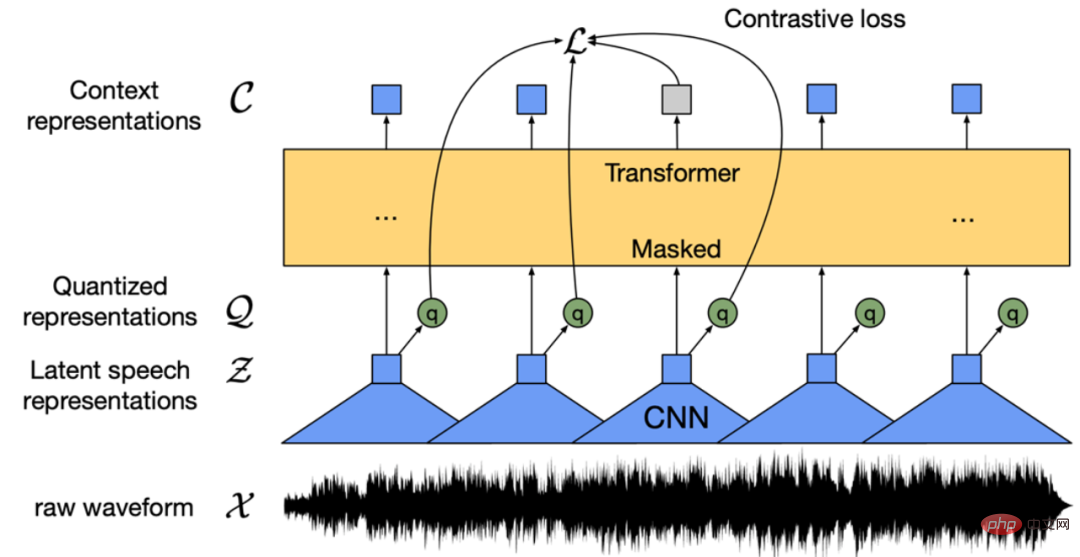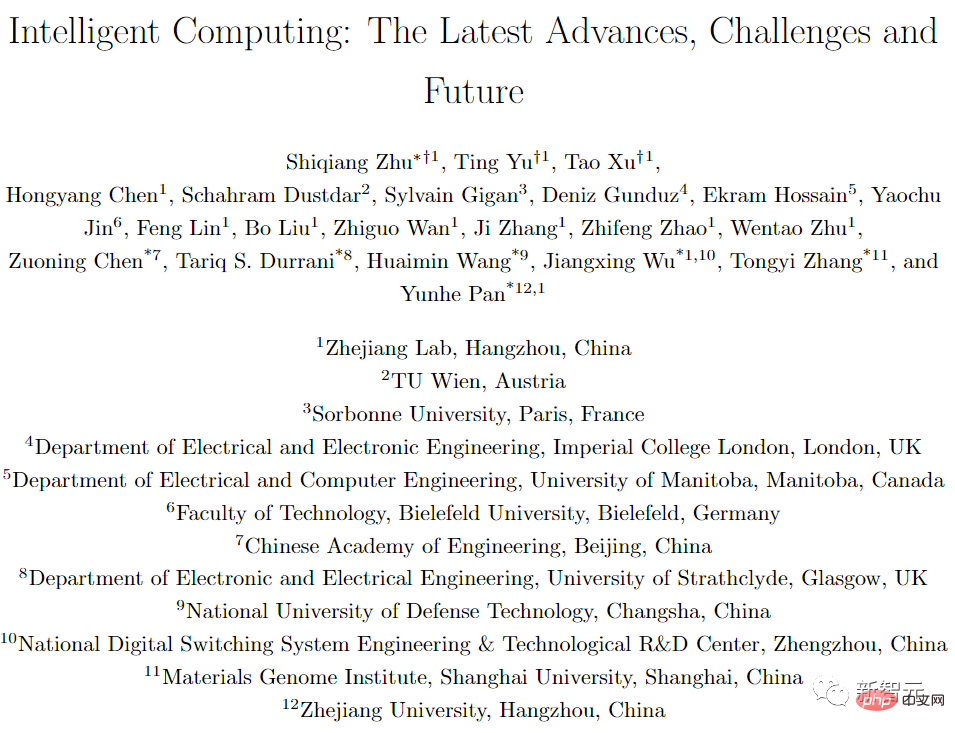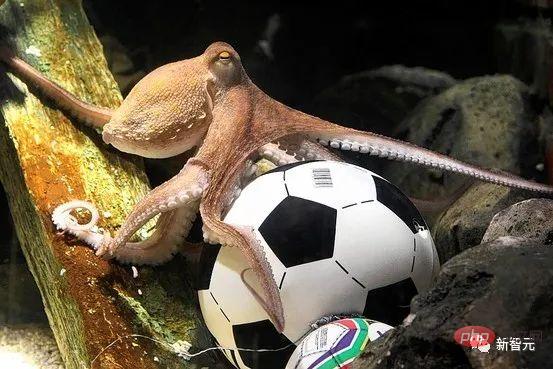 Technology peripherals
Technology peripherals AI
AI Within 24 hours and $200 to copy the RLHF process, Stanford open sourced the 'Alpaca Farm'
Within 24 hours and $200 to copy the RLHF process, Stanford open sourced the 'Alpaca Farm'At the end of February, Meta open sourced a large model series, LLaMA (literally translated as alpaca), with parameters ranging from 7 billion to 65 billion, which is called the prototype of the Meta version of ChatGPT. Afterwards, institutions such as Stanford University and the University of California, Berkeley, carried out "secondary innovations" based on LLaMA, and successively launched multiple open source large models such as Alpaca and Vicuna. For a time, "Alpaca" became the top model in the AI circle. These ChatGPT-like models built by the open source community iterate very quickly and are highly customizable. They are called the open source replacement of ChatGPT.
However, the reason why ChatGPT can show powerful capabilities in text understanding, generation, reasoning, etc. is because OpenAI uses a new training paradigm-RLHF for large models such as ChatGPT. (Reinforcement Learning from Human Feedback), which uses reinforcement learning to optimize the language model based on human feedback. Using RLHF methods, large language models can be aligned with human preferences, follow human intent, and minimize unhelpful, distorted, or biased output. However, the RLHF method relies on extensive manual annotation and evaluation, which often requires weeks and thousands of dollars to collect human feedback, which is costly.
Now, Stanford University, which launched the open source model Alpaca, has proposed another simulator - AlpacaFarm (literally translated as alpaca farm). AlpacaFarm can replicate the RLHF process in 24 hours for only about $200, allowing open source models to quickly improve human assessment results, which can be called the equivalent of RLHF.

AlpacaFarm attempts to quickly and cheaply develop ways to learn from human feedback. To do this, the Stanford research team first identified three main difficulties in studying RLHF methods: the high cost of human preference data, the lack of trustworthy evaluations, and the lack of reference implementations.
To solve these three problems, AlpacaFarm built concrete implementations of simulation annotators, automatic evaluation, and SOTA methods. Currently, the AlpacaFarm project code is open source.

- GitHub address: https://github.com/tatsu-lab/alpaca_farm
- Paper address: https://tatsu-lab.github.io/alpaca_farm_paper.pdf
As shown in the figure below, researchers can use the AlpacaFarm simulator to quickly develop new methods of learning from human feedback data, and can also migrate existing SOTA methods to actual on human preference data.

Simulation annotator
AlpacaFarm 52k instructions based on Alpaca dataset Build, of which 10k instructions are used to fine-tune the basic instruction following model, the remaining 42k instructions are used to learn human preferences and evaluation, and most of them are used to learn from simulated annotators. This study addresses the three major challenges of annotation cost, evaluation and verification implementation of the RLHF method, and proposes solutions one by one.
First, in order to reduce annotation costs, this study created prompts for API-accessible LLMs (such as GPT-4, ChatGPT), allowing AlpacaFarm to simulate human feedback at a cost of only RLHF Method 1/45 of the data collected. This study designed a random, noisy annotation scheme using 13 different prompts to extract different human preferences from multiple LLMs. This annotation scheme aims to capture different aspects of human feedback, such as quality judgments, variability between annotators, and style preferences.
The study experimentally demonstrates that AlpacaFarm’s simulations are accurate. When the research team used AlpacaFarm to train and develop methods, the methods ranked very consistently with the same methods trained and developed using actual human feedback. The figure below shows the high correlation in rankings between methods resulting from the AlpacaFarm simulation workflow and the human feedback workflow. This property is crucial because it shows that experimental conclusions drawn from simulations are likely to hold true in real situations.
In addition to method-level correlation, the AlpacaFarm simulator can also replicate qualitative phenomena such as reward model over-optimization, but continuous RLHF training for surrogate rewards may damage Model performance. The following figure shows this phenomenon in the two cases of human feedback (left) and AlpacaFarm (right). We can see that AlpacaFarm initially captures the correct deterministic behavior of model performance improvement, and then as RLHF training continues, model performance decreases.

For evaluation, the research team used Alpaca 7B real-time user interaction as a guide, and simulates instruction distribution by combining several existing public datasets, including the self-instruct dataset, the anthropopic helpfulness dataset, and the evaluation sets of Open Assistant, Koala, and Vicuna. Using these evaluation instructions, the study compared the response of the RLHF model to the Davinci003 model and used a score to measure the number of times the RLHF model responded better, calling this score the win-rate. As shown in the figure below, a quantitative evaluation of system rankings on the study's evaluation data shows that system rankings and real-time user commands are highly correlated. This result shows that aggregating existing public data can achieve performance similar to simple real instructions.

For the third challenge——Lack of reference Implementation,The research team implemented and tested several popular,learning algorithms (such as PPO, expert iteration, best-of-n,sampling). The research team found that simpler methods that worked in other domains were no better than the study's original SFT model, suggesting that it is important to test these algorithms in a real instruction-following environment.

Based on manual evaluation, the PPO algorithm proved to be the most effective, combining the model with The winning rate compared to Davinci003 increased from 44% to 55%, even surpassing ChatGPT.
These results show that the PPO algorithm is very effective in optimizing the winning rate for the model. It is important to note that these results are specific to the evaluation data and annotators of this study. While the study's evaluation instructions represent real-time user instructions, they may not cover more challenging problems, and it is not certain how much improvements in win rate come from exploiting style preferences rather than factuality or correctness. For example, the study found that the PPO model produced much longer output and often provided more detailed explanations for the answers, as shown below:


Overall, using AlpacaFarm to train the model on simulated preferences can significantly improve the human evaluation results of the model without having to subject the model to Retraining on human preferences. Although this transfer process is fragile and still slightly less effective than retraining the model on human preference data. However, it can copy the RLHF pipeline within 24 hours with only $200, allowing the model to quickly improve human evaluation performance. The simulator AlpacaFarm is still too good. It is made by the open source community to replicate the powerful functions of models such as ChatGPT. Another effort.
The above is the detailed content of Within 24 hours and $200 to copy the RLHF process, Stanford open sourced the 'Alpaca Farm'. For more information, please follow other related articles on the PHP Chinese website!
 从VAE到扩散模型:一文解读以文生图新范式Apr 08, 2023 pm 08:41 PM
从VAE到扩散模型:一文解读以文生图新范式Apr 08, 2023 pm 08:41 PM1 前言在发布DALL·E的15个月后,OpenAI在今年春天带了续作DALL·E 2,以其更加惊艳的效果和丰富的可玩性迅速占领了各大AI社区的头条。近年来,随着生成对抗网络(GAN)、变分自编码器(VAE)、扩散模型(Diffusion models)的出现,深度学习已向世人展现其强大的图像生成能力;加上GPT-3、BERT等NLP模型的成功,人类正逐步打破文本和图像的信息界限。在DALL·E 2中,只需输入简单的文本(prompt),它就可以生成多张1024*1024的高清图像。这些图像甚至
 找不到中文语音预训练模型?中文版 Wav2vec 2.0和HuBERT来了Apr 08, 2023 pm 06:21 PM
找不到中文语音预训练模型?中文版 Wav2vec 2.0和HuBERT来了Apr 08, 2023 pm 06:21 PMWav2vec 2.0 [1],HuBERT [2] 和 WavLM [3] 等语音预训练模型,通过在多达上万小时的无标注语音数据(如 Libri-light )上的自监督学习,显著提升了自动语音识别(Automatic Speech Recognition, ASR),语音合成(Text-to-speech, TTS)和语音转换(Voice Conversation,VC)等语音下游任务的性能。然而这些模型都没有公开的中文版本,不便于应用在中文语音研究场景。 WenetSpeech [4] 是
 普林斯顿陈丹琦:如何让「大模型」变小Apr 08, 2023 pm 04:01 PM
普林斯顿陈丹琦:如何让「大模型」变小Apr 08, 2023 pm 04:01 PM“Making large models smaller”这是很多语言模型研究人员的学术追求,针对大模型昂贵的环境和训练成本,陈丹琦在智源大会青源学术年会上做了题为“Making large models smaller”的特邀报告。报告中重点提及了基于记忆增强的TRIME算法和基于粗细粒度联合剪枝和逐层蒸馏的CofiPruning算法。前者能够在不改变模型结构的基础上兼顾语言模型困惑度和检索速度方面的优势;而后者可以在保证下游任务准确度的同时实现更快的处理速度,具有更小的模型结构。陈丹琦 普
 解锁CNN和Transformer正确结合方法,字节跳动提出有效的下一代视觉TransformerApr 09, 2023 pm 02:01 PM
解锁CNN和Transformer正确结合方法,字节跳动提出有效的下一代视觉TransformerApr 09, 2023 pm 02:01 PM由于复杂的注意力机制和模型设计,大多数现有的视觉 Transformer(ViT)在现实的工业部署场景中不能像卷积神经网络(CNN)那样高效地执行。这就带来了一个问题:视觉神经网络能否像 CNN 一样快速推断并像 ViT 一样强大?近期一些工作试图设计 CNN-Transformer 混合架构来解决这个问题,但这些工作的整体性能远不能令人满意。基于此,来自字节跳动的研究者提出了一种能在现实工业场景中有效部署的下一代视觉 Transformer——Next-ViT。从延迟 / 准确性权衡的角度看,
 Stable Diffusion XL 现已推出—有什么新功能,你知道吗?Apr 07, 2023 pm 11:21 PM
Stable Diffusion XL 现已推出—有什么新功能,你知道吗?Apr 07, 2023 pm 11:21 PM3月27号,Stability AI的创始人兼首席执行官Emad Mostaque在一条推文中宣布,Stable Diffusion XL 现已可用于公开测试。以下是一些事项:“XL”不是这个新的AI模型的官方名称。一旦发布稳定性AI公司的官方公告,名称将会更改。与先前版本相比,图像质量有所提高与先前版本相比,图像生成速度大大加快。示例图像让我们看看新旧AI模型在结果上的差异。Prompt: Luxury sports car with aerodynamic curves, shot in a
 五年后AI所需算力超100万倍!十二家机构联合发表88页长文:「智能计算」是解药Apr 09, 2023 pm 07:01 PM
五年后AI所需算力超100万倍!十二家机构联合发表88页长文:「智能计算」是解药Apr 09, 2023 pm 07:01 PM人工智能就是一个「拼财力」的行业,如果没有高性能计算设备,别说开发基础模型,就连微调模型都做不到。但如果只靠拼硬件,单靠当前计算性能的发展速度,迟早有一天无法满足日益膨胀的需求,所以还需要配套的软件来协调统筹计算能力,这时候就需要用到「智能计算」技术。最近,来自之江实验室、中国工程院、国防科技大学、浙江大学等多达十二个国内外研究机构共同发表了一篇论文,首次对智能计算领域进行了全面的调研,涵盖了理论基础、智能与计算的技术融合、重要应用、挑战和未来前景。论文链接:https://spj.scien
 什么是Transformer机器学习模型?Apr 08, 2023 pm 06:31 PM
什么是Transformer机器学习模型?Apr 08, 2023 pm 06:31 PM译者 | 李睿审校 | 孙淑娟近年来, Transformer 机器学习模型已经成为深度学习和深度神经网络技术进步的主要亮点之一。它主要用于自然语言处理中的高级应用。谷歌正在使用它来增强其搜索引擎结果。OpenAI 使用 Transformer 创建了著名的 GPT-2和 GPT-3模型。自从2017年首次亮相以来,Transformer 架构不断发展并扩展到多种不同的变体,从语言任务扩展到其他领域。它们已被用于时间序列预测。它们是 DeepMind 的蛋白质结构预测模型 AlphaFold
 AI模型告诉你,为啥巴西最可能在今年夺冠!曾精准预测前两届冠军Apr 09, 2023 pm 01:51 PM
AI模型告诉你,为啥巴西最可能在今年夺冠!曾精准预测前两届冠军Apr 09, 2023 pm 01:51 PM说起2010年南非世界杯的最大网红,一定非「章鱼保罗」莫属!这只位于德国海洋生物中心的神奇章鱼,不仅成功预测了德国队全部七场比赛的结果,还顺利地选出了最终的总冠军西班牙队。不幸的是,保罗已经永远地离开了我们,但它的「遗产」却在人们预测足球比赛结果的尝试中持续存在。在艾伦图灵研究所(The Alan Turing Institute),随着2022年卡塔尔世界杯的持续进行,三位研究员Nick Barlow、Jack Roberts和Ryan Chan决定用一种AI算法预测今年的冠军归属。预测模型图


Hot AI Tools

Undresser.AI Undress
AI-powered app for creating realistic nude photos

AI Clothes Remover
Online AI tool for removing clothes from photos.

Undress AI Tool
Undress images for free

Clothoff.io
AI clothes remover

AI Hentai Generator
Generate AI Hentai for free.

Hot Article

Hot Tools

WebStorm Mac version
Useful JavaScript development tools

SublimeText3 Mac version
God-level code editing software (SublimeText3)

SublimeText3 Chinese version
Chinese version, very easy to use

Safe Exam Browser
Safe Exam Browser is a secure browser environment for taking online exams securely. This software turns any computer into a secure workstation. It controls access to any utility and prevents students from using unauthorized resources.

Dreamweaver Mac version
Visual web development tools






